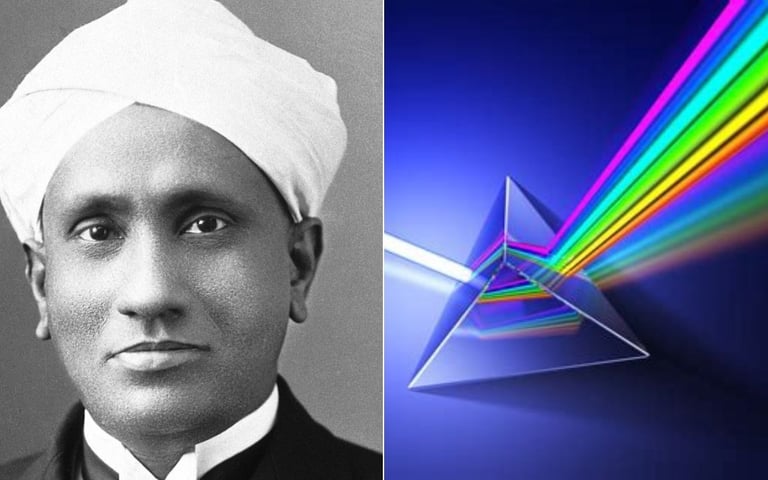
क्या हार में क्या जीत में ! किंचित नहीं भयभीत मैं
संधर्ष पथ पर जो मिले यह भी सही वह भी सही।
वरदान नहीं मानूंगा, हार नहीं मानूंगा |
Raman scattering.
PHYSICS
6/5/20242 min read


C.V.Raman
Chandrasekhara Venkata Raman was an Indian physicist whose groundbreaking work in the field of light scattering earned him the Nobel Prize in Physics in 1930. Born on November 7, 1888, in Tiruchirapalli, India, Raman made significant contributions to the study of light and the behavior of materials when subjected to it.
Raman's most notable discovery, the "Raman Effect," occurs when light interacts with matter. He found that when light passes through a transparent material, a small fraction of the light changes its wavelength and energy due to its interaction with the molecules in the material. This phenomenon, now known as Raman scattering, provides valuable information about the chemical composition and molecular structure of substances. Raman's discovery revolutionized spectroscopy and opened up new avenues for scientific research in fields ranging from chemistry to biology.
In addition to his scientific achievements, Raman was deeply committed to scientific education and research in India. He served as the director of the Indian Institute of Science in Bangalore and later founded the Raman Research Institute in Bangalore to promote scientific research in India.
For his pioneering work in physics, Raman received numerous honors and awards, including the Nobel Prize in Physics in 1930, making him the first Indian scientist to receive this prestigious accolade. He passed away on November 21, 1970, leaving behind a rich legacy of scientific discovery and innovation.Raman scattering is a fascinating phenomenon that combines both wave and particle behaviors of light. Let me break it down for you:
Raman scattering is a fascinating phenomenon that combines both wave and particle behaviors of light. Let me break it down for you:
Wave Behavior (Reflection and Energy Use):
When light interacts with matter, it exhibits wave-like properties such as reflection and energy transfer.
In elastic scattering, a photon is absorbed by a particle and then emitted without any change in its energy. This process is known as Rayleigh scattering.
Rayleigh scattering is commonly observed in everyday phenomena like the blue sky and the reddening of the sun during sunset.
Particle Behavior (Photon Collisions and Scatter Patterns):
Inelastic scattering occurs when a photon is absorbed by a particle and then re-emitted with a change in its energy.
This phenomenon is called Raman scattering or the Raman effect.
During Raman scattering, the kinetic energy of the incident particle can either be lost or increased.
Raman spectra provide valuable information about the structural characteristics of molecules.
